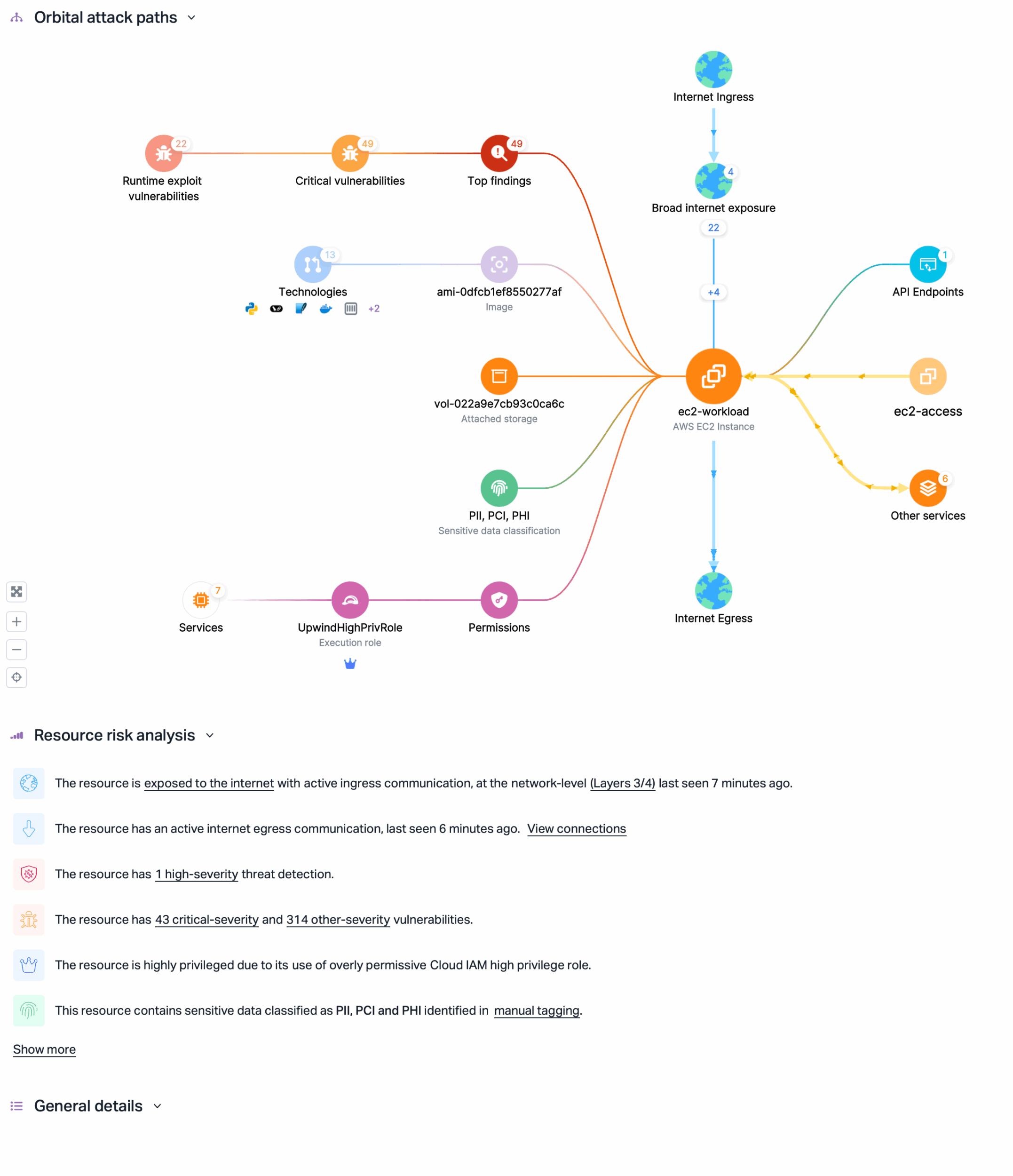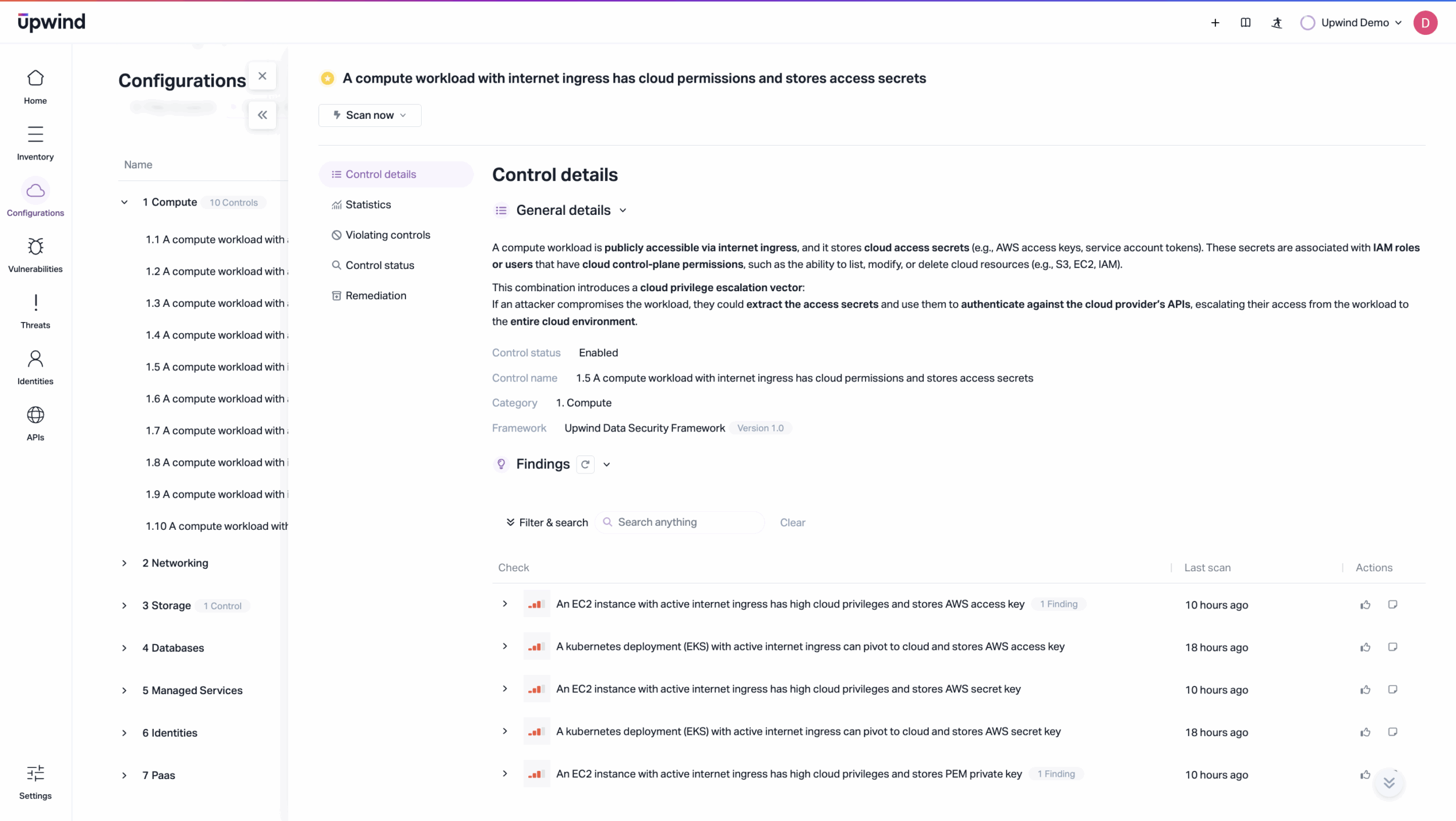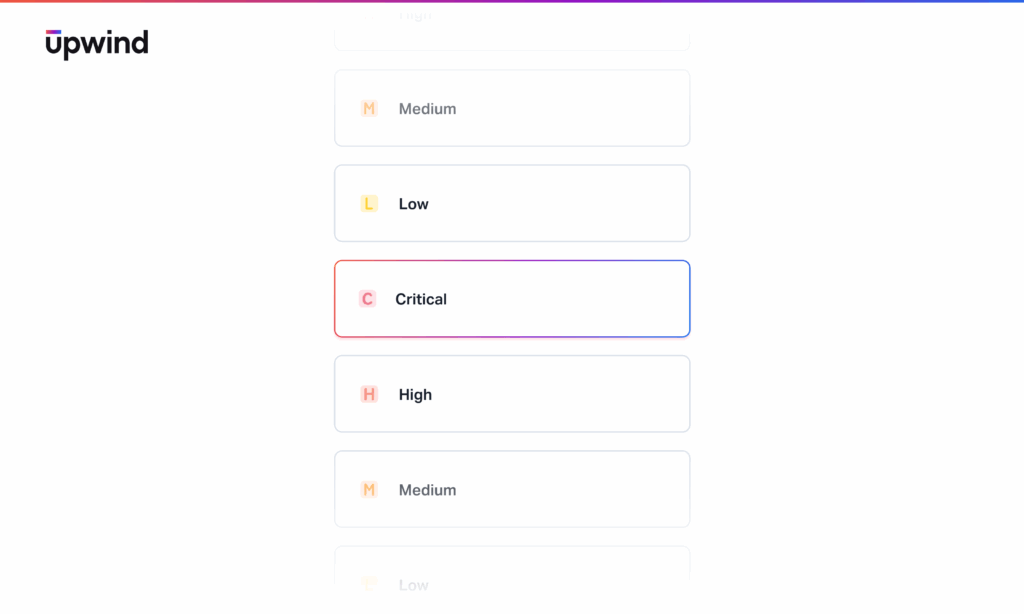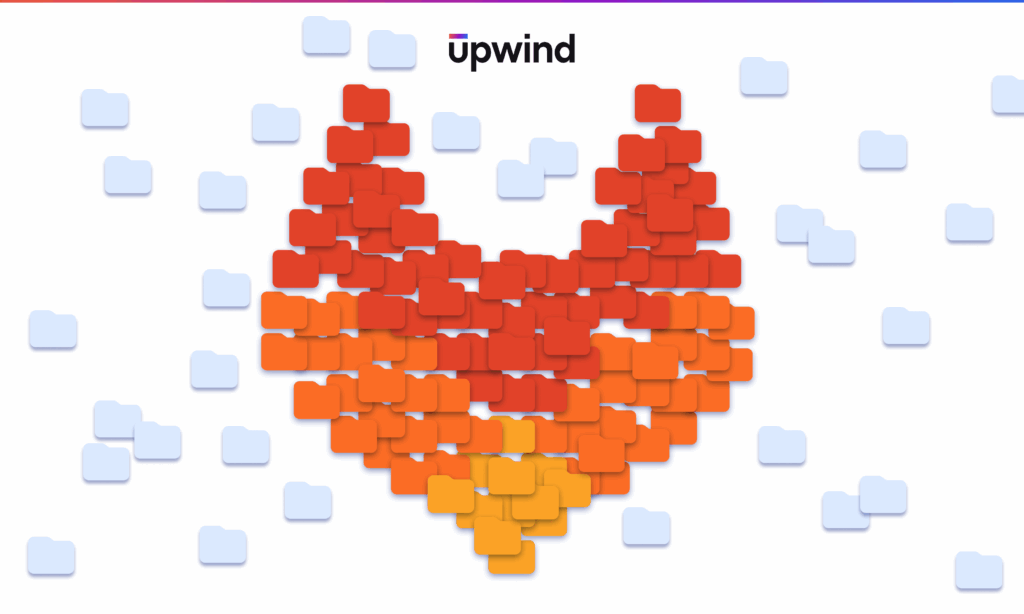
Secure Data in Rest and Transit with Upwind’s Runtime-Powered Data Security Posture Framework
Sensitive data is the crown jewel of every organization and the primary target for attackers. But in modern cloud environments, it’s increasingly difficult to answer key questions, like, “Where is our data? How is it used? What’s putting it at risk?”
Consider the example shown below – an organization has security tooling in place, but still has trouble identifying how sensitive data could be exposed. Meanwhile, they have a vulnerable containerized resource that can be accessed by machine identities with high privileges, contains PII data, and is vulnerable to broad internet exposure.

With the speed of cloud development and the increasing sophistication of bad actors, situations like the one above are incredibly common – leaving security teams scrambling to identify exploit paths and remediate them before sensitive information can be extracted.
Upwind is actively empowering organizations to avoid open exploit paths. We recently released expanded data security capabilities, and now – we’re excited to introduce the Upwind Data Security Framework, giving teams a structured, context-rich way to detect and respond to real-world data risks in production.
A Smarter Foundation for Cloud Security and Compliance
-Josiah Nosek, Security Architect at Audacy, Inc.
“Upwind’s Data Security Framework gives us a real-time view of how sensitive data is exposed in production, not just at rest. It correlates runtime behavior, access patterns, and cloud misconfigurations to show us real attack paths, not hypothetical ones. That helps our team focus on issues that are exploitable right now, not just theoretically risky.”
Upwind Frameworks are pre-built, customizable, and constantly adapting collections of “policy checks”s designed to help organizations quickly establish and mature their cloud security posture. Each framework maps to real-world risk, surfacing only the exposures that matter, based on live cloud activity across compute, storage, networking, and identity layers.

We built Upwind Frameworks based on extensive feedback from our customers, combined with ongoing research and hands-on customization from our industry-leading security research team. Upwind Frameworks evolve in step with the threat landscape, going beyond the scope and depth of traditional industry frameworks.
“We don’t just want to tick compliance boxes. We want to build real security for the specific risks our business faces. Upwind makes that possible.”
-Wojciech Syrkiewicz-Trepiak, VP Security, Spacelift
What sets Upwind Frameworks further apart are their focus on emerging and often overlooked risks. As a result, security teams can:
- Proactively defend against real-world attack patterns
- Easily adopt advanced security strategies
- Strengthen resilience while maintaining compliance and auditability
Whether you’re aligning with internal policies or meeting external requirements, Upwind Frameworks give you a clear starting point with built-in flexibility to adjust based on your environment and risk tolerance.
Bringing Context to Cloud Data Risk
Most data security tools and frameworks rely on static scans or point-in-time assessments. They might tell you where a secret was found or what kind of data a storage bucket contains, but they can’t answer whether that data is actively accessed, transmitted over insecure channels, or exposed by misconfigured workloads.

The Upwind Data Security Framework fills that critical gap. By combining storage-level discovery with real-time runtime behavior, it connects the dots between where sensitive data lives, how it’s being accessed, and how it’s at risk. Instead of surfacing generic findings, it reveals exploitable issues rooted in how your cloud environment actually behaves. This helps you prioritize and respond to the risks that matter most.
With the Upwind Data Security Framework, security teams can:
- Focus on what’s exploitable: Static gaps are less important than live risks. For example: a dormant workload with a secret might not be urgent, but a live service with internet ingress, cloud permissions, and local credentials is a real threat.
- See risk in context: Understand how signals like exposed secrets, open ingress, and known vulnerabilities interact to create real attack paths. Upwind correlates these factors to expose high-risk scenarios that traditional tools overlook.
- Follow data in motion: Track how sensitive data flows across workloads, databases, and APIs, revealing active exposure paths that posture-only tools can’t see.

What’s Included in the Initial Release
By correlating sensitive data with live runtime context, Upwind provides security teams with a prioritized, attack-path-aware view of their cloud data exposure. This helps teams focus remediation efforts where they’ll have the greatest impact, whether that means locking down credentials, re-architecting risky data flows, or tightening workload access policies.
The Upwind Data Security Framework’s initial release highlights critical, real-world cloud data exposures often missed by other frameworks. It detects when workloads exposed to the internet store access secrets. It also flags when those workloads are vulnerable to high-severity remote code execution, as well as when workloads hold CI/CD credentials under similar risky conditions.
This release can identify cases where workloads suffer from server-side request forgery (SSRF) vulnerabilities combined with exposed secrets, or when compute instances possess broad cloud permissions alongside local secret storage and unrestricted internet access, creating prime attack vectors. Additionally, the framework surfaces risks involving sensitive data processing workloads connected to backend databases over exposed network paths, as well as public S3 buckets containing sensitive information actively accessible on the internet.
Final Thoughts
What makes the Upwind Data Security Framework different is its ability to connect the dots across static findings, runtime behavior, and cloud architecture. Rather than flooding teams with thousands of low-context alerts, it surfaces the small number of exposures that truly matter. It’s not enough to know that sensitive data exists. You need to know how it’s being handled, who can access it, and where the weak links are, in real time. Without that, you’re flying blind. That’s the power of the Upwind Data Security Framework.
Ready to see how your sensitive data is being exposed in the cloud, and what to do about it? Schedule a demo with us to explore the Upwind Data Security Framework in action.




